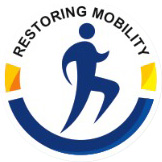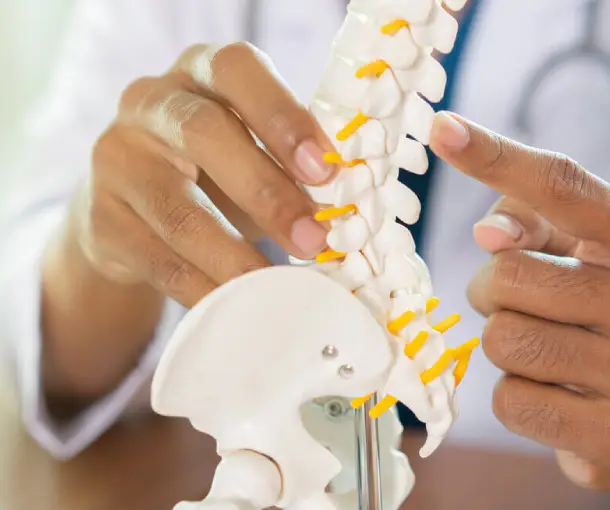Spine Surgery
What is spine surgery?
The spine is one of the most significant neurological and skeletal structures in the human body, and it is involved in a variety of physical and clinical problems. Bending, fractures, and tumors may all occur in the spine. These issues need spinal cord surgery, which entails a variety of treatments.
Spinal cord injuries may happen in any of the four divisions of the spinal cord: thoracic, lumbar, cervical, and sacral. The degree and kind of spinal cord damage are determined by the area of the spine that is injured.
When do you need spinal surgery?
Spine surgery may assist with many causes of spinal cord damage, although it is not always required. Within three months, most injuries may be treated with medicine and exercises. Lower back pain is one of the most prevalent illnesses seen by family physicians. If other therapies and medications have failed and the pain persists, spinal cord surgery may be a possibility. Spine surgery reliably alleviates related pain and numbness throughout the body.
Symptoms vary depending on the kind of spinal cord injury, however pain may often be localized to the location of the damage or infection. These symptoms may develop in post-operative patients:
– Severe back pain
– Muscle spasms
– Urinary discomfort and difficulties
– Wound drainage
– Swelling and redness around the incision
– Dizziness
What are the Options for Spine surgery?
The following are some of the most frequent back surgeries:
Discectomy
This procedure involves the excision of a portion of a disc that is causing pain or other symptoms. There are two kinds of discectomy:
Percutaneous: A part of a disc is removed using a laser or suction equipment, using a thin probe inserted via a small incision behind your back.
Microsurgical: This procedure likewise requires a little incision, less than an inch long. The surgeon uses a microscope to remove the damaged area of the disc together with a little amount of the bone that surrounds the spinal canal in this form of discectomy.
Laminectomy
When more conservative therapies such as medicine, physical therapy, and injections have failed to reduce tension, laminectomy is employed. It may also be recommended if symptoms are rapidly deteriorating.
Spinal fusion
The term “spinal fusion” refers to the process of joining two or more vertebrae to create a single unit. It is used to restrict mobility between the vertebrae and to reduce discomfort caused by activity such as lifting, bending, or twisting. It is also used to slow or halt the growth of spinal deformity.
Vertebroplasty and Kyphoplasty
These two surgeries are used to treat the pain and other issues caused by vertebral compression fractures. These two procedures are almost identical. Before injecting the cement material, a small instrument is inserted into the compressed vertebra and inflates it.
What are the risks involved in spine surgery?
Complications are possible with any surgery, and spinal cord surgery is no exception. If you are having spinal cord surgery, the first thing you will be asked is about the hazards of the operation. Every question concerning the patient’s medical history, allergies, medication, and lifestyle must be completed correctly. These responses might assist the doctor in understanding your situation.
Factors that may increase your chances of requiring spine surgery include:
– Age
– Overall health
– Smoking status
– Osteoporosis
– Previous surgical experience
How to Prepare for Spine Surgery
Exercise may help you stay healthy and fit before having spinal cord surgery. If you’re physically fit, you’ll be able to ignore blood clotting and circulation concerns throughout surgery.
Prepare for the surgery by educating yourself and refraining from using nonsteroidal anti-inflammatory medicines before the procedure. Some medications, including supplements such as omega-3 fatty acids, might thin your blood. Ask your surgeon about each prescription pill you take.
What should you expect from the procedure?
Individuals’ pre-operative expectations for spinal cord surgery are likely to differ. One should be completely prepared for the methods and processes that will be used.
A tubular retractor is the most usually utilized approach. A small incision is created during the treatment, and a tubular retractor softens the tissues all the way down to the spinal column.
The surgeon gains access to the spine by inserting tiny tools into the core of the tubular retractor. Some surgeries need the use of more than one retractor and incision. The tubular retractor is withdrawn from the body in Final, and the muscle begins to return to its previous place.
The post-procedure consists of
Hospitalization
The spinal surgery performed will decide how long you will be in the hospital and how much support you will need following surgery. Many spinal cord surgical procedures need one or more overnight stays in the hospital.
Check-ups on a regular basis throughout the rehabilitation process
The staff will evaluate your circulation, leg and foot mobility, and you may be given an incentive spirometer to assist your lungs to avoid pneumonia. To close the wound, surgical tape, sutures, or adhesive tape may be utilized.
Medication
There may be some discomfort in the first few days following surgery, which is to be anticipated. Medication may help regulate it. Inform your nurse of any and all types of discomfort you are experiencing. After a few days, the pain medication will be replaced by medications that may be used orally.
Diet
It is important to change your diet after spinal cord surgery in order to maintain the body healthy and functioning properly. One should keep track of how many calories consumed every day and avoid meals heavy in fat and sugar.

